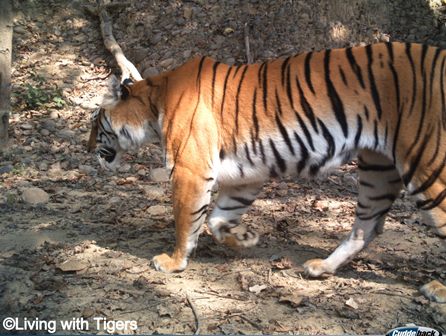Research
Living with Tigers Project
Tiger populations in Nepal have increased by 63% since 2008 as a result of successful efforts to control illegal poaching. While it’s amazing news, it’s led to a new conservation challenge – protecting the tiger population and local communities from human-tiger conflict.
In the Terai lowlands of Nepal, a major initiative by the Nepal Government and conservation NGOs to enforce zero poaching of tigers has resulted in a recovery of tiger populations in Chitwan and Bardia National Parks.
However, the regions surrounding these parks also have some of Nepal’s most dense rural human population, composed mainly of very poor communities that rely heavily on forest resources. As a result, there has been an increase in human-tiger conflict, with people and livestock being attacked by tigers.
To help prevent Nepal’s success in tiger conservation being undermined by this conflict, we’ve teamed up with the Nepalese organisation Green Governance Nepal to engage the communities around Chitwan and Bardia in devising participatory approaches to ensure their safety, improve their livelihoods, and prevent retaliatory killing of tigers.
To this end, we are working with around 1200 households across eight communities around these parks. Our work involves implementing practical measures to improve the safety of people and livestock; developing supplementary livelihood opportunities to reduce dependence on the forested areas where tigers live, and addressing behaviours which put both people and tigers at great risk.
Project Partners












